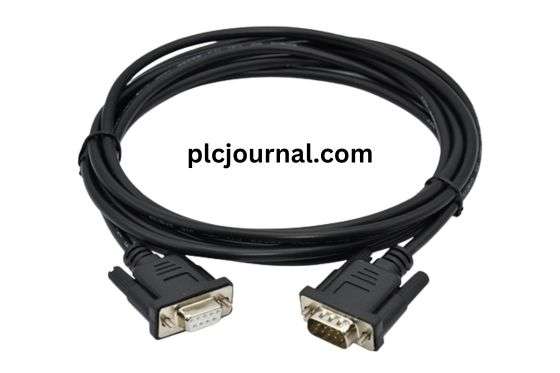[DIY-Cable] “HMI Omron NT-Series” Programing Cable Making Tips
![[DIY-Cable] “HMI Omron NT-Series” Programing Cable](https://plcjournal.com/wp-content/uploads/2023/09/plcjournal.com-1.jpg)
Reviving Legacy Machines: Crafting Your Own Omron HMI Om-NT Programming Cables
The Omron HMI Om-NT has a storied history in the world of industrial automation. Despite no longer being in production, these HMI units continue to play a vital role in various industrial applications. Repairing and maintaining these older machines, however, can be a daunting task due to the scarcity of available programming cables. In this comprehensive guide, we will delve into the process of creating NT-Series HMI cables from scratch, equipping you with the knowledge to keep your legacy machines operational.
The Legacy of Omron HMI Om-NT
The Omron HMI Om-NT, with its enduring legacy, has been a cornerstone of industrial automation for many years. These robust and reliable human-machine interfaces have been trusted in countless applications, and their presence continues to be felt in various industries. Despite advancements in HMI technology, many businesses and facilities rely on these older Omron models to power their processes.
The Cable Conundrum
One of the major challenges in maintaining Omron HMI Om-NT units lies in sourcing the necessary programming cables. With these units no longer in production, off-the-shelf cables are scarce and often expensive when available. This predicament has led many industrious technicians and engineers to explore the possibility of crafting their own cables.
DIY Solution: Creating NT-Series HMI Cables
Creating your own programming cables for Omron HMI Om-NT units is a practical and, moreover, cost-effective approach to keeping these legacy machines up and running. Fortunately, this process does not require an extensive background in electronics. Furthermore, with the right components and, at the same time, a step-by-step guide, you can craft these cables with relative ease, thereby ensuring continued operation of your devices.
Components You’ll Need
Before you embark on creating your own NT-Series HMI cables, gather the following components:
1. Male and Female COM DB-9 Connectors
These connectors are the heart of your DIY cable project. Therefore, ensure that you obtain high-quality connectors so that you can guarantee the durability and, at the same time, reliability of your cables. Moreover, using quality components also helps prevent potential issues during operation, thereby ensuring a smooth and long-lasting performance.
2. Shielded Cable
Select a shielded cable to prevent interference and, at the same time, signal loss. Additionally, the cable should have enough wires so that it can accommodate the specific requirements of your Omron HMI Om-NT unit. Moreover, choosing the right cable ensures that your DIY project functions reliably and efficiently.
3. Soldering Iron and Solder
A soldering iron and solder are essential tools for connecting the wires to the DB-9 connectors securely. Moreover, using these tools properly ensures that the connections are strong and, at the same time, reliable. In addition, this careful approach helps to prevent loose connections, thereby improving the overall performance of your DIY cable project.
4. Wire Stripper and Cutter
You’ll need these tools to prepare the cable and, at the same time, the connectors for soldering. Additionally, having the right tools ensures that the preparation process is smooth and, as a result, leads to secure and reliable connections.
5. Wiring Diagram
Obtain a wiring diagram that details the pin connections between the DB-9 connectors and, at the same time, your Omron HMI Om-NT unit. Importantly, this diagram is crucial for a successful cable assembly, because it ensures that each connection is accurate and, as a result, prevents potential errors during the build process.
Crafting Your NT-Series HMI Cable
Now that you have all the necessary components and tools, follow these steps to create your own NT-Series HMI cable:

1. Prepare the Cable
Start by cutting the shielded cable to your desired length. At the same time, ensure that the cable length is sufficient for your application. Moreover, measuring carefully before cutting helps prevent mistakes, thereby saving time and ensuring a smooth assembly process.
2. Strip the Cable Ends
Use the wire stripper to carefully strip the ends of the shielded cable. At the same time, make sure you expose enough wire so that it can be soldered onto the DB-9 connectors. Moreover, stripping the wire properly ensures that secure and reliable connections are achieved, thereby improving the overall performance of your DIY cable.
3. Examine the Wiring Diagram
Refer to the wiring diagram specific to your Omron HMI Om-NT unit. In addition, this diagram will clearly illustrate which wires need to be connected to each pin on the DB-9 connectors. Moreover, following the diagram carefully ensures that each connection is accurate, thereby preventing errors during assembly.
4. Solder the Connections
Carefully solder the stripped cable ends to the corresponding pins on both the male and female DB-9 connectors. Ensure that the connections are secure and free from any stray solder.
5. Insulate the Connections
To prevent any short circuits or interference, carefully insulate the soldered connections using heat-shrink tubing or, alternatively, electrical tape. Moreover, taking this precaution ensures that your DIY cable remains safe and fully functional, thereby protecting both the cable and the connected devices.
6. Test Your Cable
Before deploying your newly crafted NT-Series HMI cable, test it with your Omron HMI Om-NT unit to verify that the connections are accurate and that the cable functions as intended.
Troubleshooting and Tips
While crafting your own NT-Series HMI cable, you may encounter some challenges. Below, you’ll find some troubleshooting suggestions to assist you on your journey:
- Check the Wiring Diagram: Ensure that you are following the correct wiring diagram for your specific Omron HMI Om-NT unit model. Using an incorrect diagram can lead to connection issues.
- Inspect Your Soldering: First, thoroughly examine your soldered connections. Moreover, loose or poorly soldered wires can result in unreliable cable performance. Therefore, taking the time to check each connection carefully ensures that your DIY cable operates efficiently and safely.
- Test Continuity: Use a multimeter to test for continuity between the connectors and cable ends. This can aid in detecting any wiring mistakes.
- Use Quality Components: Invest in high-quality connectors and shielded cable to ensure the longevity and reliability of your cable.
- Safety First: When soldering, be cautious of hot soldering irons and ensure you are working in a well-ventilated area.
Conclusion
Crafting your own Omron HMI Om-NT programming cables is a practical solution for maintaining and repairing legacy machines. With the right components, tools, and a reliable wiring diagram, you can create custom cables that meet the specific requirements of your HMI unit. This DIY approach not only saves you money but also empowers you to extend the lifespan of your valuable equipment.
As technology advances, legacy machines like those powered by Omron HMI Om-NT units remain valuable assets in various industries. By mastering the art of creating your own cables, you can continue to rely on these trusted workhorses for years to come. Whether you’re a seasoned technician or a DIY enthusiast, this guide equips you with the knowledge to keep your legacy machines operational and productive.
Technical Guides
What Is a Programmable Logic Controller (PLC)? Full Explanation
What is HMI? Human-Machine Interface (HMI)-Full Explanation
What is a Variable Frequency Drive?-It’s complete guidelines
What Is a Servo drive and How Does it Work? It’s complete guidelines
Manual PDF
[PDF] Delta PLC DVP-ES2/EX2/SS2/SA2/SX2/SE&TP Operation Manual Free Download
Delta HMI-DOPSoft User Manual Free Download [PDF]
Cable Making
[DIY-Cable] PLC/HMI-Panasonic Connecting PC
[DIY-Cable] PLC/HMI-Keyence Connecting PC
[DIY-Cable] S7-200 Siemens Connecting PC
[DIY-Cable] Mitsubishi PLC Programming Cable SC-09 for FX-Series
[DIY-Cable] PLC Delta Programming Cable DVPACAB230
[DIY-Cable] PLC OMRON Programing Cable for CJ/CS/CQ-Series
[DIY-Cable] PLC “LS/LG” Programing Cable
[DIY-Cable] PLC “Fatek/Facon” Programing Cable
[DIY-Cable] PLC “Vigor” Programing Cable
[DIY-Cable] HMI “Fuji/Hakko” Programing Cable
[DIY-Cable] “HMI Omron NT-Series” Programing Cable
[DIY-Cable] HMI Keyence “VT3-W4 Series” Cable Connecting To PLC
[PDF] HMI-Weintek Connection PLC Guide





